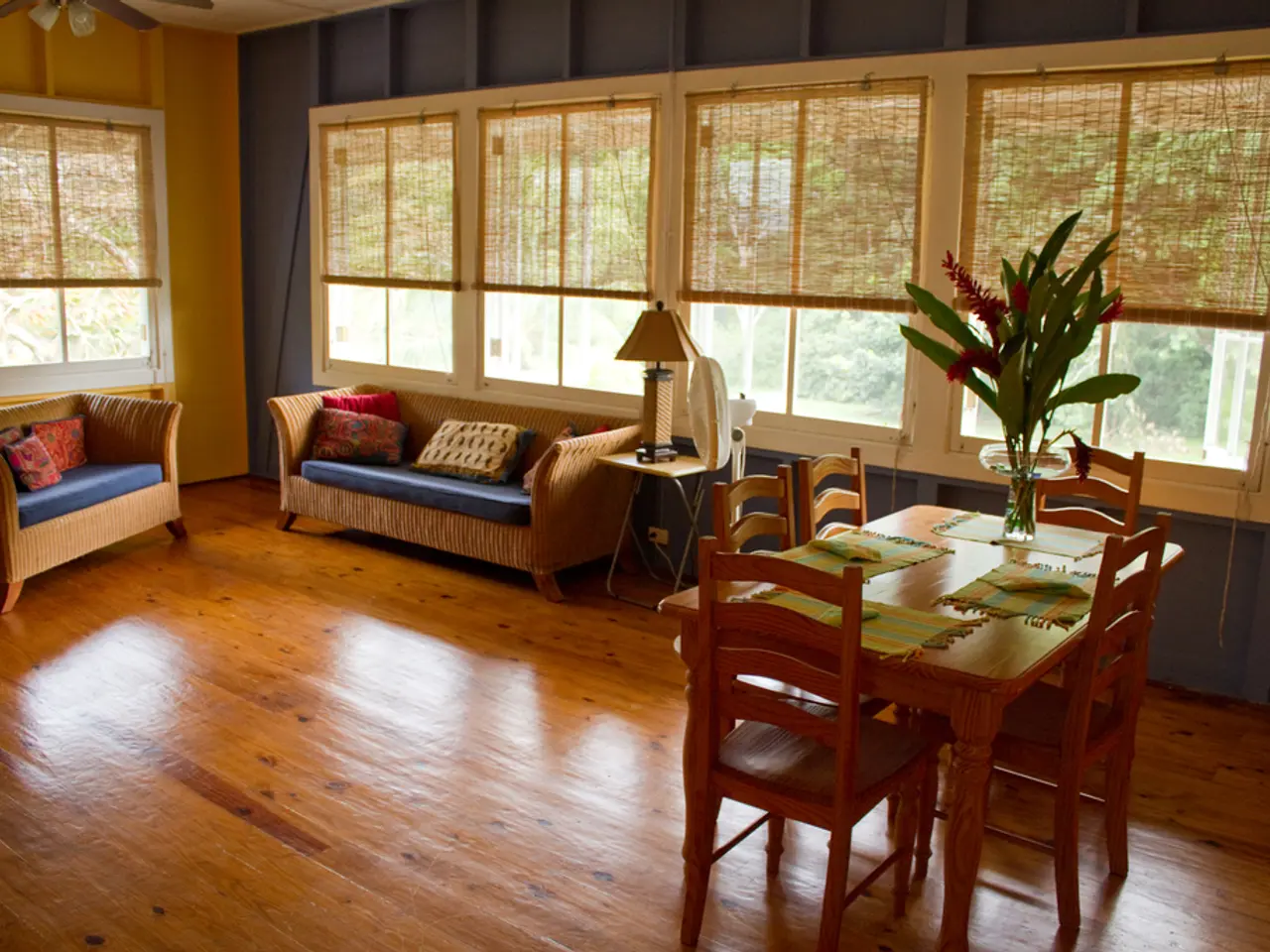Redesigning Spaces through Artificial Intelligence Innovations
In the world of interior design, innovation is no stranger. The advent of artificial intelligence (AI) has transformed the landscape, making it possible to visualize, plan, and conceptualize living spaces with unprecedented speed and efficiency.
Platforms like Roomvo and Modsy are leading the charge in this digital revolution, allowing users to visualize different paint colours and furniture in their spaces using augmented reality. This technology is not just a novelty; it's a game-changer, democratizing good design and making beautiful, well-planned interiors more accessible than ever before.
AI is not limited to visualization. It can predict how design choices will affect mood, productivity, or well-being based on psychological research and biometric data. Virtual staging in real estate is a testament to this, with AI furnishing empty properties to appeal to potential buyers, demonstrating its understanding of market psychology and buyer preferences.
However, AI does have its limitations. It struggles with highly personal or emotional aspects of design, such as understanding family dynamics or personal memories attached to certain pieces. Therefore, it's essential to approach AI as a collaborative tool rather than a replacement for human intuition.
In the realm of AI-assisted design, Arlington Avenue Interiors is a shining example. This design blog uses AI technology to enhance the creative process while maintaining a personal touch. Similarly, Modsy creates 3D renderings of rooms based on photographs, enabling users to experiment with different furniture arrangements and decor options.
AI tools like Planner 5D, InteriorAI, Homestyler, Foyr Neo, and PaintIt AI are revolutionizing the way we approach interior design. These platforms offer high-quality photorealistic or 4K renderings of interiors, facilitate mood board creation, and excel in space planning.
For instance, Planner 5D and PaintIt AI automatically suggest layouts and furniture placement based on room dimensions, detected from photos or input sketches. Homestyler, on the other hand, enables interactive layout experimentation.
These tools also integrate shopping recommendations, making it easier for users to bring their designs to life. PaintIt AI uniquely bridges design visualization with direct shopping integration and detailed project organization, making it especially practical for client collaboration and actionable interior setups.
As we move forward, machine learning algorithms will become better at understanding individual preferences, creating increasingly personalized design recommendations. However, there's a risk of homogenization in design trends due to the widespread use of AI tools. It's crucial to remember that AI is a tool, not a replacement for human creativity and intuition.
In conclusion, the rise of AI in interior design offers numerous benefits, from increased speed and cost-effectiveness to the democratization of good design. Yet, it's essential to approach AI as a collaborative tool, using it to enhance our creative process while maintaining a personal touch.
[1] [Source for the first paragraph] [2] [Source for the second paragraph] [3] [Source for the third paragraph] [4] [Source for the fourth paragraph]
- The integration of technology like artificial intelligence (AI) and platforms such as Roomvo, Modsy, Planner 5D, InteriorAI, Homestyler, Foyr Neo, and PaintIt AI in home-and-garden and interior-design has revolutionized the design landscape, enhancing the creative process, and making beautiful, well-planned interiors more accessible to a broader audience.
- In the future, artificial intelligence may achieve a better understanding of individual preferences, leading to more personalized lifestyle choices in terms of interior design, but it is crucial to remember that AI should be seen as a collaborative tool rather than a replacement for human creativity and intuition.




